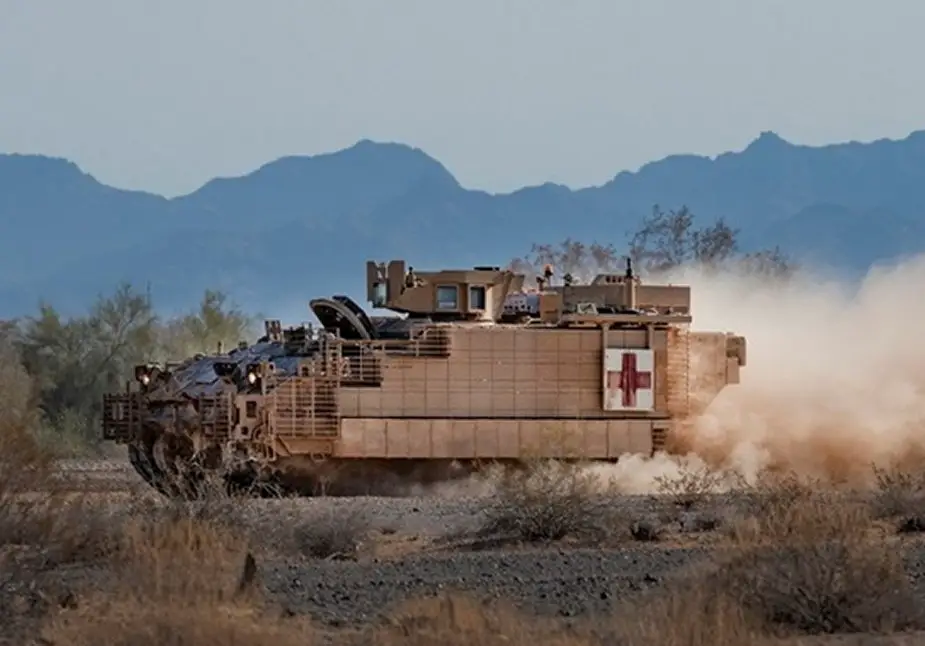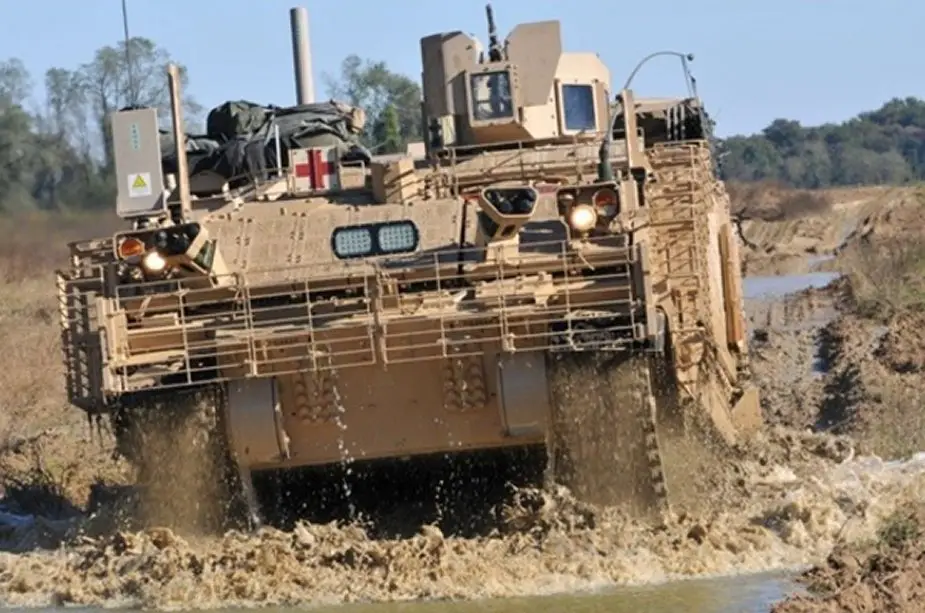The two medical variants in the U.S. Army’s AMPV program (Medical Evacuation Variant and Medical Treatment Variant) are well-equipped to treat soldiers and save lives on the front lines.

Armored Multi-Purpose Vehicle (AMPV) in medical variant (Picture source: BAE Systems)
When the public sees warfare through the lens of the media the images that arise tend to be of fighter jets launching from aircraft carriers or other high-tech weaponry. What can be missed is some of the important work that goes on behind the scenes, such as the heroic efforts routinely undertaken by Army medics to treat casualties and save lives.
In the near future their efforts are going to get a major boost – and those Army medics played a big role in it. The boost will arrive in the form of two medical vehicles among the five variants in the Army’s Armored Multi-Purpose Vehicle (AMPV) program currently underway in partnership with BAE Systems.
The AMPV offers three key advances over the legacy fleet: increased mobility, force protection and onboard power. For the medical variants, these new improvements mean they will arrive in the Army’s Armored Brigade Combat Teams (ABCTs) highly capable from a design and technological standpoint to help save Soldiers’ lives.
“The ability of the AMPV to get to the front lines with other combat vehicles means the medical variants will give commanders more options on the battlefield to rescue soldiers who are hurt while remaining engaged in the fight,” said Bill Sheehy, BAE Systems’ AMPV program manager and a 29-year Army veteran who served in the First Gulf War. “From a soldier’s perspective, the Army’s investment in the medical vehicles underscores our country’s commitment to ensure soldiers are protected and have the resources to quickly treat and evacuate those injured in battle.”
Flexibility, refrigerators, and surgery.
Like any medical situation, time is the critical factor when it comes to treating soldiers within the golden hour to save lives on the battlefield. The new AMPV medical vehicles will help close the time gap, and they come in two iterations with a range of capabilities unseen in earlier vehicles.
The Medical Evacuation variant (MEV) provides immediate treatment or evacuation at the point of injury to either ambulatory or litter casualties. Ambulatory patients are able to walk into the vehicle on their own and sit upright while getting treatment, and carry on the fight if necessary. The more serious litter patients need to lie down inside the vehicle to get treatment. The MEV vehicle can accommodate up to six ambulatory patients or four litter cases, or 3 ambulatory and 2 litter and can be reconfigured on the spot. It employs equipment common to civilian ambulances.
The Medical Treatment variant (MTV) works in tandem with the MEV to receive and evacuate casualties while providing life-sustaining care to soldiers suffering from life-threatening injuries. It carries equipment to sustain life for days while awaiting further evacuation from forward operations. Equipment such as the erectable treatment shelter, medication, vital signs monitor, defibrillator, and refrigerator for storing blood, convert the MTV into a medical station on the front lines, known as a Forward Aid Station.
Both variants have full climate control to help quickly stabilize patient body temperature in varying warfare environments - hot or cold.

Armored Multi-Purpose Vehicle (AMPV) in medical variant (Picture source: BAE Systems)
Strength and speed on the front lines
The medical vehicles bring new advances to help soldiers injured in battle. The AMPVs are being built with stronger armor and greater mobility than the vehicles they’re replacing. The higher levels of survivability accomplish two key objectives.
First, the improved survivability means they can go as needed to the front lines with the rest of the ABCT, whereas legacy medical vehicles could not. By being closer to the battle, they can more rapidly respond to treating the injured and evacuate them from the battlefield and into the hospital. Second, their increased strength and maneuverability makes them less reliant on other fighting vehicles for protection, allowing them to more independently carry out their mission. This unique capability of evacuating casualties under armor eliminates the need to pull another armored combat vehicle from the front lines.
“The AMPV medical vehicles are the first that can get right up on the front lines to evacuate soldiers, treat them and get them to safety,” said Ruben Burgos, BAE Systems’ program manager for the AMPV. “They have the mobility and the armor to do that.”
The AMPV’s interior is much larger than its predecessor, offering more space and payload capacity. Medics will have more room to maneuver inside the vehicles while treating their patients, and can carry more equipment operated on electrical power.
Teaming with Army medics
There are acquisition programs where a small number of systems are fielded and improvements are made in future systems based on solider feedback under a concept known as “spiral development.” From day one, the BAE Systems’ AMPV team has been working hand-in-hand with Army medics to incorporate their feedback into the overall vehicle design to and ensure the best possible capabilities are included in the medical variants once they deploy. The partnership has helped define the location of medical equipment to optimize speed and accessibility.
“Working with the Army medics has really given us the best vehicle possible,” Burgos said. “Medical vehicles are among the most complex because of all the equipment needed, and getting that equipment in the right places is a challenge - like trying to solve a Jenga puzzle.”
BAE Systems, the Army’s Tank-automotive and Armaments Command (TACOM), and battle-experienced Army medics conducted field exercises to support the internal design. BAE Systems and TACOM employees were used to simulate soldiers wounded in battle being loaded into the vehicles for treatment. The information provided by medics who have been deployed in the fight has been critical to maximize the effectiveness of the medical variants.
“They have been out in the battle and are coming to us with invaluable experience and knowledge to help us understand what is important in the positioning of the equipment inside the medical variants,” Burgos said. “All of this is going to contribute to saving lives.”















